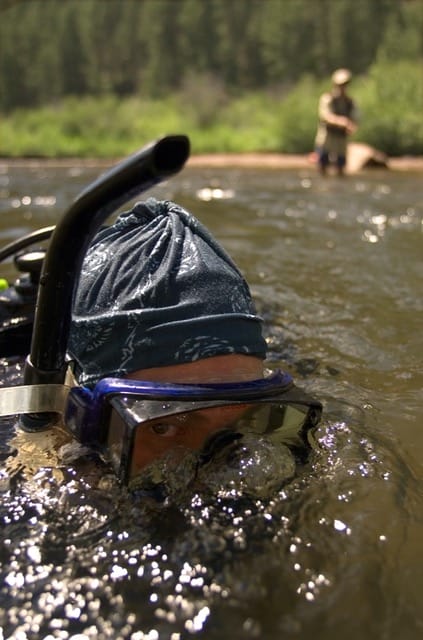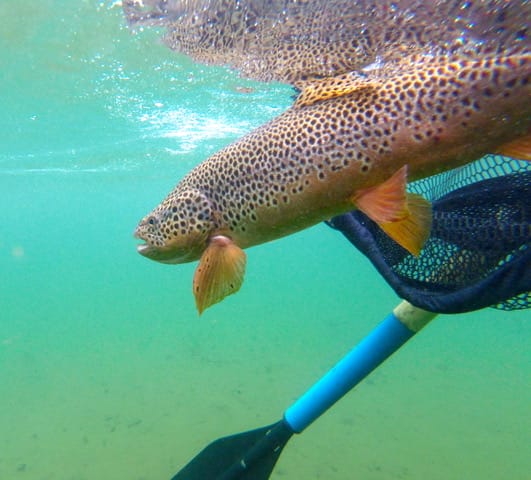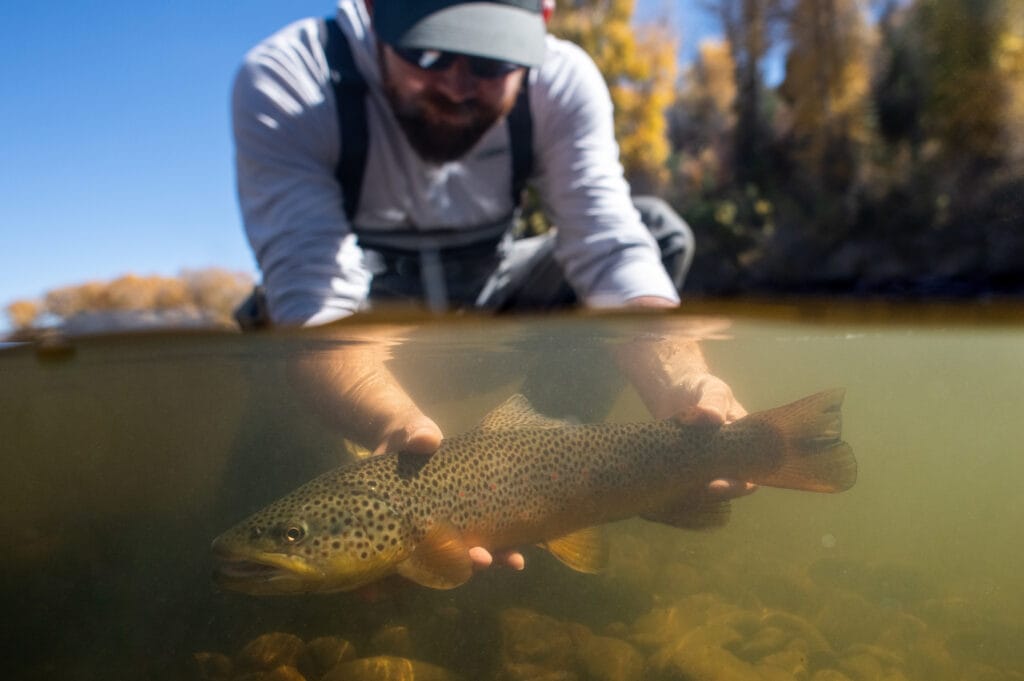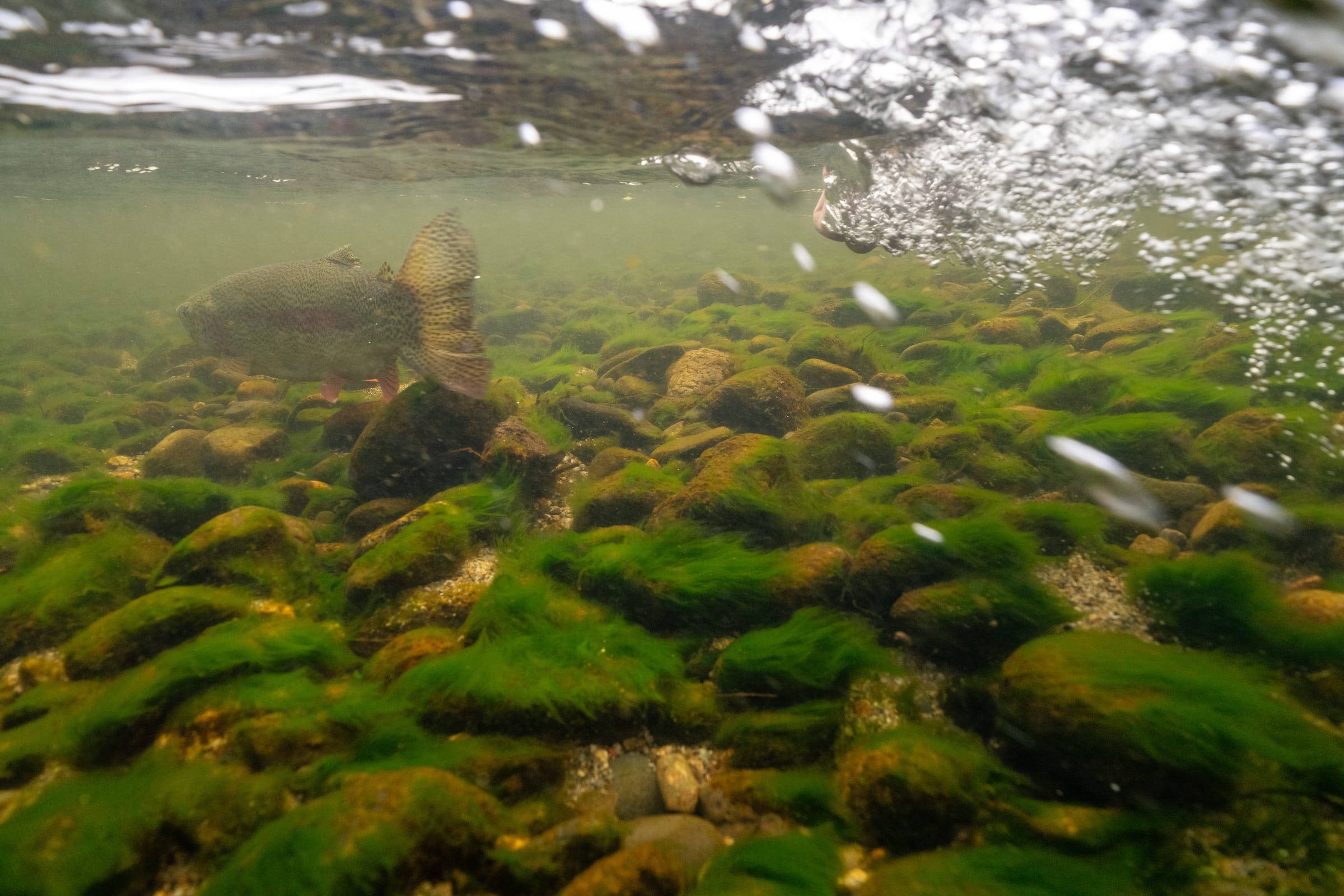Like many anglers, I often found myself wondering what the fish were actually doing beneath the surface. Eventually, my curiosity got the better of me. I got some SCUBA gear, dove into the North Fork of the South Platte River in Colorado and hung out with the trout to watch and learn what was really going on as a couple of my buddies cast flies at the fish. This “be the fish” experience eventually evolved into a story for Field & Stream called “Going Deep in the Name of Trout Research.”

The most riveting lesson I took away upon resurfacing was that the fish were not startled by my presence among them; I could easily get within arm’s reach of a feeding trout and it wasn’t bothered one bit by the big, neon, bubble-blowing mass in the water next to it. My guess is that the fish had just never encountered that before, so they didn’t have an instinctive reaction.
But what, exactly did freak the fish out?
Any motion or moving shadows above them. A bird’s shadow, for instance, triggered an immediate nervous instinct to scatter or head for deeper water.

That also held true for false casts over the fish. As I held onto a boulder in the river bottom, I watched the fish skitter away time and time again when my friends made continuous false casts over the run. With every false cast, the wariness intensified, in effect diminishing the possibility of a hookup with each pass the line made over the water.
Think about that in the context of the shadows you cast as you wade, and the number of false casts you make. Try to keep your false casts to a minimum, and direct them slightly away from the fish, bringing only the cast that counts directly into the target zone. And know where the sun is as you approach a trout run.
Spooky factor number two?
Noise.
I was surprised by how much I could hear subtle noises like cleats on wading boots grinding on rocks and gravel. The fish could obviously sense that also, though in different ways.
How long do you think it took for the fish to come back into form and assume their original positions (or close) and resume the routine after a noise or shadow/motion sent them packing?
On that river, at that time of year (fall) it only took about a minute or two. So don’t get bummed if a boat floats through your run. Just chill out for a bit.
In fact, once you’ve waded into position (presumably making noise and creating waves as you went) you might think to pause a minute or two and let the fish “reset themselves” before making that first cast.

In the next printed issue of TROUT magazine, Tom Rosenbauer will debunk a myth that I had always considered to be true—that trout have blind spots directly behind them. His arguments make a lot of sense, and I think a lot of people will find that story interesting.
But blind spots or not, we know that trout are keenly tuned into to what’s happening directly above them. If you want to be a little less spooky this Halloween season, at least when you fish, I’d cut down on the overhead motions and shadows as much as possible.
(Adapted from the Little Red Book of Fly Fishing)



